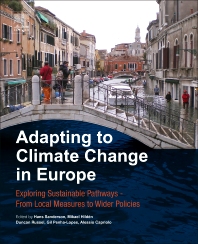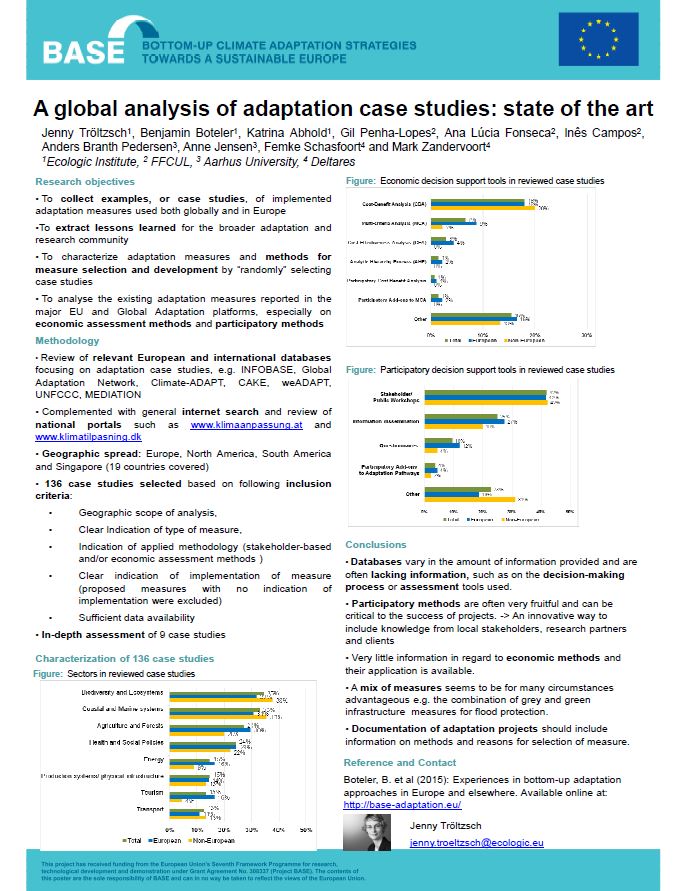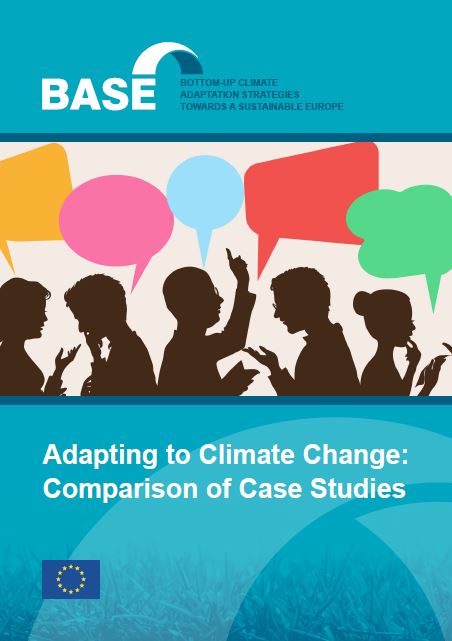Dieser Bericht untersucht den Beteiligungsprozess in der Klimawandelanpassung für 22 europäische BASE-Fallstudien. Er enthält eine Beschreibung der partizipativen Methoden und die Analyse von 9 BASE-Fallstudien, in denen ein exzellenter Anpassungsprozess vorliegt. Auf dieser Grundlage werden Empfehlungen für Politiker und Praktiker gegeben.
- Sprache
-
Englisch
- Autorenschaft
-
Andreas Hastrup ClemmensenAnne HaugvaldstadAndré VizinhoGil Penha-Lopes
- Credits
beteiligten Autoren:
Søren Gram, Roos M. den Uyl, Anders Branth Pedersen, Mette Termansen, Oliver Gebhardt, Volker Meyer, Zuzana Harmáčková, Eliška Lorencová, David Vačkář, Femke Schasfoort, Mark Zandvoort, Ad Jeuken, Rutger van de Brugge, Anne-Mari Rytkönen, Milla Mäenpää, Marta Olazabal, Pedro Iglesias, Sebastien Foudi, Marc Neumann, Jenny Tröltzsch, Margaretha Breil, Ana Iglesias, Sahran Higgins
- Finanzierung
-
Europäische Kommission, Generaldirektion Forschung & Innovation (GD Forschung & Innovation), International - Jahr
- Umfang
- 167 pp.
- Projekt
- Projekt-ID
- Inhaltsverzeichnis
-
Gesamtes Inhaltsverzeichnis
1 Introduction to Participation in Climate Change Adaptation
1.1 Objectives and Aim
1.2 Approach
1.3 Case study overview
2 Participatory Analysis of Case studies
2.1 Methodology for Participation Matrix Analysis
2.1.1 Participation Matrix Outline
2.1.2 Level of Participation
2.1.3 Stakeholder Groups involved in the participatory process
2.1.4 Definition of stakeholders
2.1.5 Adaptation Phases
2.2 Case studies placed in the Participation Matrix
2.2.1 Cornwall
2.2.2 Dartmoor
2.2.3 Holstebro
2.2.4 Jena
2.2.5 Lake Ijsselmeer Region
2.2.6 Lolland
2.2.7 Prague
2.2.8 South Devon Coast
2.2.9 South Moravian Region
2.2.10 Timmendorfer Strand
2.2.11 U.K. Health
2.2.12 Ústí Region
2.2.13 Venice
2.2.14 Alentejo
2.2.15 South Aveiro Coast
2.2.16 Cascais
2.2.17 Copenhagen
2.2.18 Green Roof, Šumava Region
2.2.19 Kalajoki River Basin
2.2.20 Kalundborg
2.2.21 Rotterdam
2.2.22 Tagus River Water District, Madrid
2.3 Overall observations
2.3.1 How far are the case studies in the climate adaptation work?
2.3.2 Stakeholders involved in the adaptation phases
2.3.3 Level of participation
2.4 Objectives for the interaction of stakeholders
2.4.1 Development of adaptation options, strategies or plans
2.4.2 Analyse current adaptation actions
2.4.3 Assess consequences of adaptation options
2.4.4 Conflict Resolution
2.4.5 Knowledge Exchange
2.4.6 Communicate
2.4.7 Decision making
2.4.8 Implementation of adaptation measures
2.4.9 Evaluation of implemented adaptation actions
3 Participatory Methods in Climate Change Adaptation
3.1 Participatory Methods
3.2 Participatory methods used
3.2.1 Stakeholder workshop
3.2.2 World Café
3.2.3 Participatory add-ons to Multi Criteria Decision Analysis (MCDA)
3.2.4 Systematization of experiences
3.2.5 Design Workshops
3.2.6 Citizen summit
3.2.7 Fuzzy Cognitive Mapping
3.2.8 Scenario workshop
3.2.9 Dynamic Adaptive Policy Pathways
3.3 Methodologies developed within BASE project:
3.3.1 SWAP – Scenario Workshop & Adaptation Pathways
3.3.2 Participatory Benefit-Cost Analysis (PBCA)
4 Analysis of Deliberate Participation Processes
4.1 Methodology for case study analysis
4.2 Case study analysis of deliberate participation process
4.2.1 Alentejo
4.2.2 South Aveiro Coast
4.2.3 Cascais
4.2.4 Copenhagen
4.2.5 Green Roof, Sumava Region
4.2.6 Kalajoki River Basin
4.2.7 Kalundborg
4.2.8 Rotterdam
4.2.9 Tagus River Basin, Madrid
5 Conclusions and recommendations
5.1 Policy makers
5.1.1 Guidelines to achieve successful participation
5.1.2 Opportunities of applying participation
5.2 Practitioners
5.2.1 Recommendations to practitioners
5.3 Concluding remarks
6 References
7 Annex 1: Summary of methods to support participatory planning, implementation,
evaluation and monitoring
8 Annex 2: Reporting Structure - Schlüsselwörter
-
Anpassung, Klimawandel, Nachhaltigkeit, Europa, Kosten-Nutzen-Analyse, Stakeholder-Engagement, Effektivität politischer Instrumente, Wissenstransfer, Bottom-up, Top-down, Umwelt-GovernanceEuropa, Vereinigte Staaten, Singapur, Brasilien, Peru, Alentejo, Süd-Aveiro-Küste, Cascais, Kopenhagen, Sumava-Region, Kalajoki-Flussbecken, Kalundborg, Rotterdam, Tejo-Flussgebiet, Madrid, Cornwall, Dartmoor, Holstebro, Jena, Ijsselmeer Region, Lolland, Prag, Süd-Devon-Küste, Südmährische Region, Timmendorfer Strand, UK Gesundheit, Region Ústí, Venedig, Alentejo, CascaisFallstudien
Andreas Prahl (Hg.) 2017: Definition of a data collection process for bottom-up monitoring. multEE Policy Brief Nr.3
Boteler, Benjamin; Katrina Abhold; Jenny Tröltzsch et al. 2015: Experiences of Bottom-up Adaptation Approaches in Europe and Beyond. BASE Deliverable 4.2.





